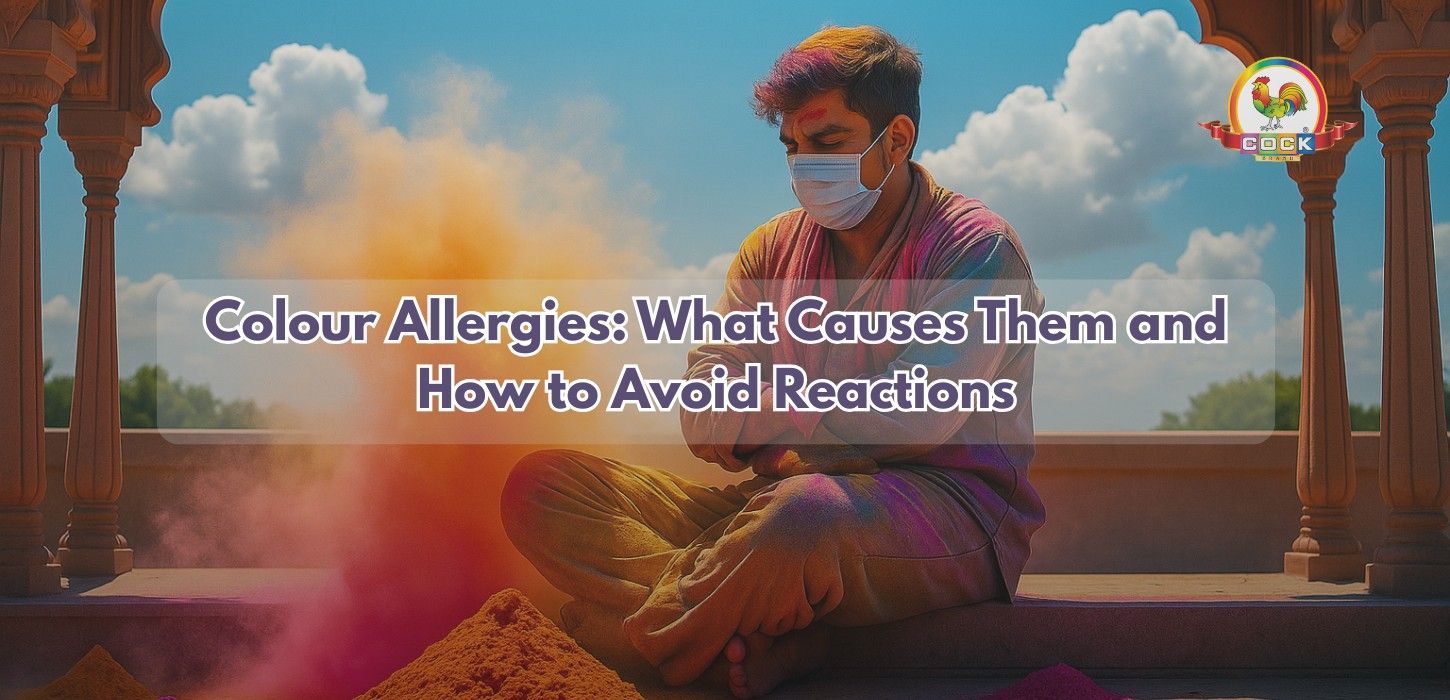


Holi, the vibrant Festival of Colours, brings joy, unity, and a burst of colour each spring across India and beyond. However, this exhilarating festival can bring unintended consequences for some: allergic reactions to Holi colours. With increasing awareness about the ingredients in coloured powders and their effects on sensitive skin, it’s crucial to understand what causes Holi colour allergies, how to recognize them, and the best practices for celebrating safely—including the use of safe colours for sensitive skin and organic Holi colours.
Traditionally, Holi colours were made from natural substances like flowers, turmeric, and sandalwood. In recent years, commercialisation has led to the widespread use of synthetic dyes and additives. Many of these contain chemicals that can be harsh on the skin and harmful if inhaled.
Synthetic Dyes: Artificially coloured powders often contain industrial dyes and heavy metals such as lead, mercury, and chromium. These can trigger skin rashes, itching, redness, and more severe reactions in sensitive individuals.
Unregulated Fillers: To bulk up powders, manufacturers sometimes add talc, chalk, or mica dust, which can cause respiratory distress or aggravate asthma.
Fragrances and Preservatives: While intended to make the powders more appealing, these additives are common skin irritants and may provoke allergies in those prone to reactions.
Exposure to such ingredients can result in what’s medically known as contact dermatitis, a type of skin allergy caused by direct contact with allergens or irritants in the powder. Symptoms may include itching, burning, swelling, blisters, or even hives—especially in those with sensitive skin or existing skin conditions like eczema.
Understanding the symptoms of a skin allergy from Holi colours can help you act promptly:
Redness and Itching: The most common and immediate symptoms, typically appearing within minutes to hours after exposure.
Bumps or Blisters: Fluid-filled bumps or swelling may indicate a stronger allergic reaction.
Burning Sensation: Some people feel their skin burning or stinging, especially if the colour was applied for a long period.
Rashes: Widespread or patchy rashes, sometimes with flaky skin.
Eye Irritation: If powder enters the eyes, it can cause redness, swelling, and tearing.
Note: If you experience difficulty breathing, swelling of the lips or face, or feel faint, seek medical help immediately as these may indicate a severe allergic reaction (anaphylaxis).
Thankfully, you can still enjoy Holi by taking a few simple precautions:
Opt for powders labelled as safe for sensitive skin or designed for children. These typically avoid harsh chemicals and dyes.
Patch Test: Always do a patch test on a small area of your arm a day before Holi. If redness or itching develops, consider an alternative brand.
Read Ingredients: Check for certifications or ingredient lists. Avoid any products with ammonia, heavy metals, or artificial fragrances.
The safest option remains Organic Holi Colours, made from natural sources such as flowers, turmeric, beetroot, spinach, or sandalwood. These are free from harmful chemicals and less likely to cause skin issues.
Homemade Colours: You can easily make colours at home using dried flowers or vegetables. For example, orange from marigold petals, red from rose petals, and green from spinach or henna.
Certified Brands: Look for brands with organic, eco-friendly, and dermatologically tested labels.
Supporting Artisans: By buying from local artisans who prepare natural powders, you not only keep yourself safe but also support traditional craft.
Moisturize: Apply oil or moisturizer on exposed skin before playing with colours. This creates a barrier and makes it easier to wash off powders.
Protective Clothing: Wear long sleeves and cover most of your skin. Opt for sunglasses to protect your eyes from accidental splashes.
Nail Polish or Oil: Coat your nails with clear polish or oil to prevent colour from staining and irritating the skin around your nails.
Gentle Cleansing: Do not scrub colours off aggressively. Wash with lukewarm water and a gentle soap or cleanser. Pat dry—do not rub.
Moisturize Again: Reapply moisturizer or aloe vera gel to help your skin recover.
Monitor Symptoms: If you notice any delayed reactions such as blisters, swelling, or persistent rashes, seek medical attention.
Wash Off Immediately: Rinse affected areas with plenty of water.
Apply Soothing Lotion: Use calamine lotion or a mild topical corticosteroid for relief (after consulting your doctor).
Avoid Home Remedies for Severe Reactions: Never apply household powders, toothpaste, or random oils if you see blisters or severe redness—these can worsen the reaction.
Seek Medical Advice: For any worsening symptoms or allergies affecting breathing or the eyes, consult a healthcare professional right away.
Raising awareness about safe Holi colour allergies benefits everyone: children, adults, and the environment. Schools, communities, and social platforms should promote the use of organic Holi colours and discourage harsh, synthetic powders. By making informed choices and prioritizing safe colours for sensitive skin, we can ensure that everyone—a child celebrating for the first time, an elder joining in, or someone with a history of allergies—can enjoy the true spirit of Holi without fear.
